Ion Conducting Materials for Energy Applications
The Ion Conducting Materials Laboratory of the CheMaMSE group focuses its activities on the synthesis and the preliminary screening of electrolytic materials able to easily and selectively conduct only the desired ionic species. This allows for the realization of electrochemical energy conversion and storage devices with an improved performance and durability in comparison with the modern state of the art, including: (i) low-temperature fuel cells and electrolyzers; (ii) secondary batteries; (iii) redox flow batteries; and (iv) dye-sensitized solar cells.
The materials are designed in a rational way, avoiding “trial and error” approaches and starting from the operational requirements of the application of interest in terms of: (i) ionic species to be transported (e.g., H3O+; OH–; Li+; Mg2+); (ii) different chemical species to be blocked (e.g., one or more of methanol; V2+; V3+; VO2+); (iii) operating environment (acid aqueous environment; alkaline aqueous environment; anhydrous organic environment); and (iv) operating conditions (especially in terms of temperature).
In several instances the ionic conduction materials are nanocomposites obtained by combining: (i) a matrix capable of conducting ionic species (e.g., ionic liquids, or polymer electrolytes such as Nafion™, polyethylene oxide or polyketones); and (ii) suitable solid or liquid fillers able to modulate and improve the transport properties and the selectivity of the matrix (for example ceramic clusters, functionalized nanoparticles, but also suitable mineral acids, ionic liquids or innovative inorganic systems exhibiting an interfacial ion conduction).
The know-how and equipment available at the Ion Conducting Materials Laboratory cover many aspects of the synthesis of both the matrix and the various fillers, where present. Of particular importance are: (i) the equipment to carry out synthesis in an inert atmosphere (Schlenck line) and the polymerization of polyketones; (ii) the machinery for the preparation and the functionalization of fillers, including high-energy planetary ball mills; and (iii) the equipment to formulate the final electrolyte and, where necessary, form it into the required configuration (e.g., in the guise of a membrane).
It is possible to classify the multitude of ionic conduction materials that can be devised in the following main families:
• Anion- or cation-exchange polymeric electrolytes for low temperature ion-exchange membrane fuel cells, electrolyzers or redox flow batteries;
• Polymer electrolytes for secondary batteries or dye-sensitized solar cells;
• Hybrid inorganic-organic electrolytes for secondary batteries;
• Ceramic electrolytes for secondary batteries;
• Electrolytes based on Ionic liquids for secondary batteries.
The produced electrolytes undergo a preliminary characterization aimed at evaluating their potential in the intended uses. One of the first figures of merit that are determined is the ionic conductivity; if the latter is high enough for the desired application, the materials are transferred to the other laboratories of the CheMaMSE group for detailed characterization and integration into prototype devices to be tested in terms of performance and durability.



